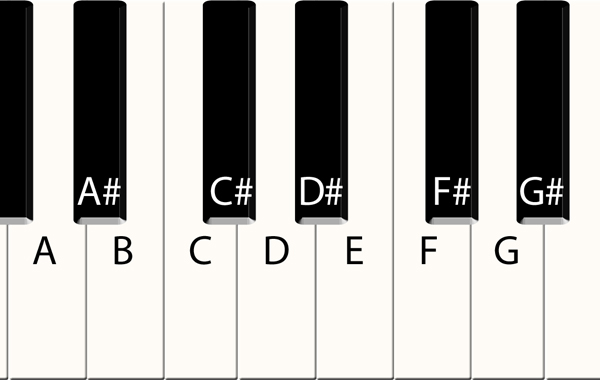Before we explore music concepts (ie: harmony, melody, theory) we must understand how music scales are built and used. A Scale organizes pitches (or notes) in a given range from lowest to highest frequency. The range depends on the musical instrument’s playing range. In Western music there are twelve different pitches (or notes). If we arrange all twelve notes in order we create the Chromatic Scale.
Each note in the chromatic scale is an equal distance away from it’s neighbor note. The space between any two notes is called an Interval. There are several types of intervals in music. The smallest interval is called a Half-Step. The chromatic scale could be described as a scale made of eleven half-steps.

Think of half-steps as two notes that are adjacent to each other, almost ‘touching’. If we played them on the piano each chromatic half-step note would be played on neighboring piano keys:

When played on the guitar (or any fretted instrument) each chromatic half-step note would be played in neighboring frets:

Note Naming:
In many respects Music is a language, so like a language it has an alphabet. Each note is named after a letter. When we see a note name it will contain one of these letters:
A – B – C – D – E – F – G. These are referred to as Natural Notes. Notes can be altered by adding symbols to the letter name.
Sharp Notes have the letter name followed by a sharp symbol [#]. Sharp Notes are notes that have been raised one half-step up. For example: A# is one half-step above A. (Important: Half-steps occur naturally between notes B + C and E + F so you won’t see B# or E#)
Flat Notes have the letter name followed by the flat symbol [b]. Flat Notes are notes that have been lowered one half-step down. For example: Bb is a half-step below B. If we rewrite the chromatic scale from above with flat notes it would look like this:

These scales sound the same because sharp notes and flat notes occupy the same space, key, or fret. Both are found in between natural notes so it’s more a matter of spelling than sound. For example: An A# sounds exactly like a Bb. Which name the note gets depends on the natural note that was altered.










